As proof that we don't do things by halves, we decided to try to do most of Paris in a single day. I had it all planned out - we would do a mix of walking and small train hops and should be able to get around the main sights. It meant that we would miss out on visiting the museums but, since we only had a day and a half, it would mean that we would be able to see most of the highlights.
We started at the Laplace Train Station just south of Paris and bought ourselves tickets for unlimited train travel in Paris for the next two days. We ended up going for the Paris Visite travel pass, for zones 1-3 for two days. This was €22.65 each for Kris and I and we bought child tickets for Cam and Tom at €11.30 each.
The train arrived quickly and we got off at the Luxembourg stop (7 minutes ride). When we tried to leave the station our tickets failed to scan at the exit booth so we needed to talk to the support group. It turns out that they were highly sensitive to magnets, so storing them in my phone case was not the right thing to do. She also looked at the child ticket and queries "Enfant? Child?" Cameron was around the corner, so I pointed at Tom (who is now almost as tall as I am). She raised an eyebrow, but passed us new tickets.
I didn't think anything about it as I thought the child tickets were for under 18s, it was only when writing this page I checked up and they are for 7 to 11 year olds.
Our first stop of the day was the Panthéon. The Panthéon was build in 1758 and its name means "Temple to all the Gods". It was originally intended to be a church to St Genevieve (based on a promise from King Louis XV, after he recovered from an illness), but the French Revolution overtook the completion and it became a mausoleum. It then switched back and forth between a temple and a church, before finally being decreed as a mausoleum in 1881.
Across from the Pantheon was the Mairie du 5e arrondissement - The Town Hall, built in 1864 and the Church of Saint-Étienne-du-Mont (built in the 15th century):
Our next stop was Notre-Dame, but on the way we passed this insanely narrow set of apartments:
Notre-Dame de Paris (Our Lady of Paris) is one of the most iconic buildings in France. It was first started in 1163 but remodelled multiple times. The cathedral was the site of the Coronation of Napoleon, the location of Victor Hugo's The Hunchback of Notre-Dame, and the funerals of many French Presidents.
Unfortunately the cathedral suffered a major fire in 2019 and is currently still undergoing repairs, which are expected to finish December 2024. The reconstruction is still underway, with large parts of the building still covered in scaffolding and access restricted by fencing:
The intent was to do the rebuild as accurately as possible, and there were several signs nearby explaining the process:
We snapped a few last shots as we headed to our next destination:
On the way we passed the Fontaine Saint-Michel, built in 1860:
We then passed Sainte-Chapelle, the Holy Chapel, which was the main chapel for the Palais de la Cité, the medieval Palace of Paris. The Chapel was built in 1248 and has some impressive golden gates:
and the Tour de l'Horloge du Palais de la Cité - the City Palace Clock Tower:
We then crossed the Pont au Change (Exchange Bridge) and came to the Fontaine du Palmier - built as a victory monument by Napoleon in 1806 to provide drinking water to the city. It is based on a Roman column, but it is to memorialise the Egyptian campaign, so it is flanked by sphinxes that spurt water. The top is the statue of Victory with laurels.
Just behind the fountain was the Tour Saint-Jacques, the only remaining part of a church built in the 1500s that was destroyed in the French revolution:
Our next stop was the Hôtel de Ville or the Town Hall. The first wing was constructed in 1535 and it continued to be added on over time. It houses the local government and is currently geared up in preparation for the Paris Olympics:
Continuing on, we came to the Parish Church of Saint-Paul of Saint-Louis, built in the 1600s:
We then continued to the next destination - La Place de la Bastille. This square once housed the Bastille Prison, which was stormed and destroyed at the start of the French Revolution. In the centre of the square is the July Column which commemorates the 27-29th July which was the fall of King Charles X. The column is made from twenty-one bronze drums and is 47m tall. The names of those who died in the Revolution are engraved around the sides of the column and it is topped with a globe and the golden Génie de la Liberté (the "Spirit of Freedom").
The square was filled with protestors and police so we did not stay for long, instead we jumped on the train and headed to our next stop.
 |
| Génie de la Liberté holding the torch of freedom and his broken chains |
We hopped off the train outside the Louvre, the most famous of Paris' museums and home of the Mona Lisa. unfortunately we didn't have time to head inside, but we did check out the iconic glass pyramids that make up its outside.
After watching all of the Instagrammers pulling the pouty 'duck-face' and posing pretending to hold onto the top of the pyramid, Kristine decided to parody it - I had my turn later at the Arc de Triomphe.
One of the sights I remembered from my trip to Paris in 1996 was the Arc de Triomphe du Carrousel, another triumphal arch built by order of Napoleon in 1806. Unfortunately, like a lot of the tourist sites, it was being cleaned up and repaired for the Olympics and we couldn't see much behind the scaffolding:
We then walked through the Tuileries Garden, which were created by Catherine de' Medici in 1564 as the gardens for the Tuileries Palace and became a public park after the French Revolution. From there we were able to see both the Arc de' Triomphe and the Eiffel Tower:
 |
| This sculpture misbehaved and was placed in a body bag |
 |
| Thesee Combattant Le Mintaure |
 |
| Bassin Octagonal |
At the end of the Gardens was the Place de la Concorde and the Obélisque de Louxor.
Tomas was upset that the Place de la Concorde did not house an actual Concorde aircraft. The square is the largest in Paris and was the site of the executions of King Louis XVI, Marie Antoinette and Maximilien Robespierre. It was renamed to the Place de la Révolution during the French Revolution and reverted back in 1795.
The square also housed the Luxor Obelisk - one of two matching obelisks detailing the reign of Pharoah Ramesses II. They were gifted to France by the Egyptian government in the 1800s and the other remained in Egypt as it was too heavy to move. The second one was gifted back to Egypt in 1981. The obelisks are believed to have been crafted in 1250BC and are therefore over 3000 years old.
It is currently flanked by grandstands being created for the Olympics.
The square also holds the Fontaine des Mers, built in 1840.
From the square we could also see the Palais Bourbon, a mansion built in the 1700s:
We then walked down the Champs-Élysées towards the Arc de Triomphe:
 |
| The Grand Palais |
 |
| An interesting Louis Vuitton |
 |
| Statue at the Grand Palais |
 |
| Dome from Les Invalides |
We stopped for a quick lunch and then headed out to check out the Arc de Triomphe de l'Étoile (The Arch of Triumph of the Star). The star in the name refers to the fact that the Arc sits at the end of twelve avenues that radiate outwards.
The Arc was built in 1836 to honour those who died in the French Revolutionary War and Napoleonic Wars and the names of the generals and victories are etched onto its inner and outer walls. The World War I Tomb of the Unknown Soldier lies under the arch. The Arc is 50m tall, 45m wide and 22m deep.
 |
| My copy of the Instragrammer photos |
We then changed our initial plans and instead of heading down to the Eiffel Tower, we caught a train out towards a big rugby shop - Boutique Rugby to get the kids some rugby boots.
We got off the train at Place de Clichy, next to the Monument to Maréchal Moncey, a French Commander during the Revolutionary Wars and Marshal of the Empire:
We then headed towards Montmartre and past the famous Moulin Rouge. The Moulin Rouge is a musical theatre and cabaret club and the birthplace of the Can-Can dance:
Our walk towards Montmartre lead us into market and the Wall of Love.
The wall was created in 2000 by artists Fédéric Baron and Claire Kito and is 612 tiles made out of enamelled lava with the phase "I Love You" in 250 languages.
We then headed up to the Basilica of Sacré-Cœur du Montmartre (Sacred Heart of Montmartre) up seemingly endless stairs:
The view from the top was amazing - one way was the Basilica and the other was an amazing view over Paris.
The Basilica was completed in 1914 to counter the 'morale decline' in Paris which the Bishop of Nantes believed led to the defeat of France and Napoleon III in the Franco-Prussian war.
There were hundreds of padlocks over every fence and sellers walking around with padlocks for sale. We also witnessed a scammer trying the cheap ticket sale scam at the funicular. Sellers hang around by the ticket machine and offer cheaper or quicker tickets. These are often discounted children or disabled tickets and have often been used, meaning that the ticket holder gets stopped at the bottom and fined for not having the correct or valid ticket. A man was arrested just after we left and we saw him being frisked by police at the station as we walked down the stairs.
We then headed down the stairs and back to the train:
 |
| Some guys were doing a Tik-Tok live carrying weights up the hill |
We then took the train from Abbesses Station (or Abscesses as Tom called it), to Les Invalides.
Hôtel des Invalides (The hotel of invalids) was completed in 1706 and is current a series of museums, memorials and monuments dedicated to the military history of France. The complex was originally a hospital and retirement home for soldiers. The Royal Chapel, Dôme des Invalides, is 107m tall, making it the tallest church in Paris. It holds the tomb of Napoleon and several other important military figures.
The side of the building had been taken over for a protest on the Covid-19 Vaccination and we were approached by the protesters who put down their cigarettes to tell us of the dangers of the vaccine.
From Les Invalides, we walked to our final stop of the day, the Eiffel Tower. We had caught glances of the most famous of Paris' landmarks as we walked around, but now we headed towards it to get a proper look.
The Eiffel Tower (Tour Eiffel) was designed by Gustave Eiffel and built in 1889. It was planned as the centrepiece to the World's Fair in 1889 and was planned to be temporary. It quickly became the most recognisable structure in Paris and one of the most recognisable buildings in the world. It is 330m tall and the base is a square with sides of 125m.
We had a little time remaining, so at Cameron's request we headed out to Parc des Princes, the home stadium of football (soccer) team Paris Saint-Germain and the Stade Jean-Bouin, home of rugby union team SF (Stade Français) Paris:
 |
| Stade Jean-Bouin |
By now we were pretty tired and caught the train back to our apartment for dinner and to begin to pack for our departure the next day. Overall we had walked about 30km for the day.















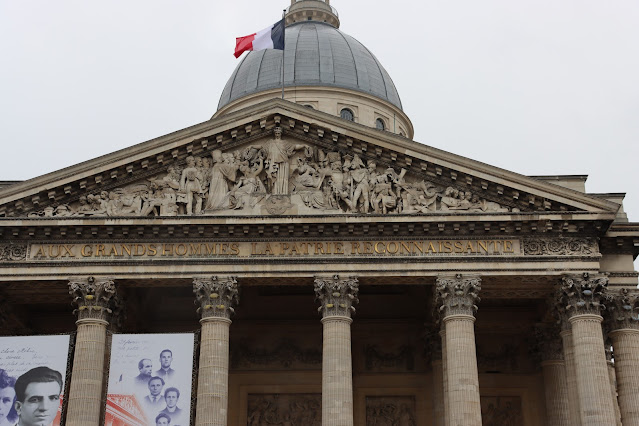


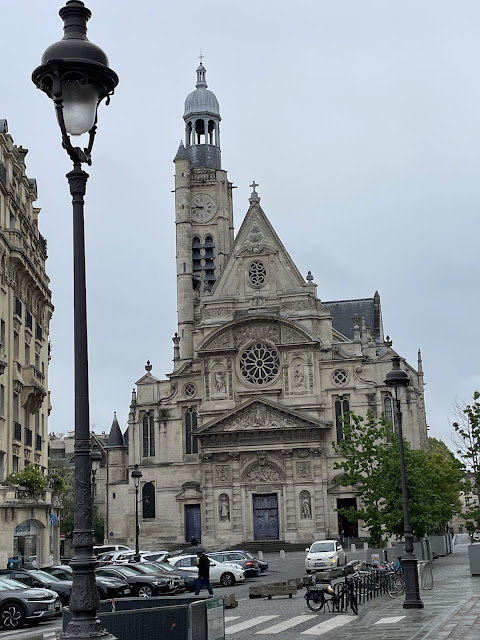







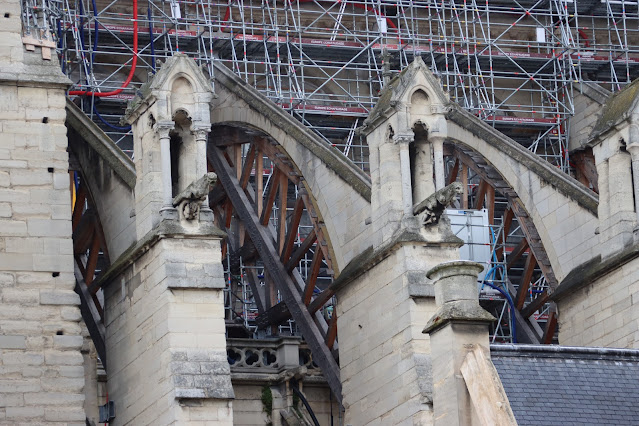





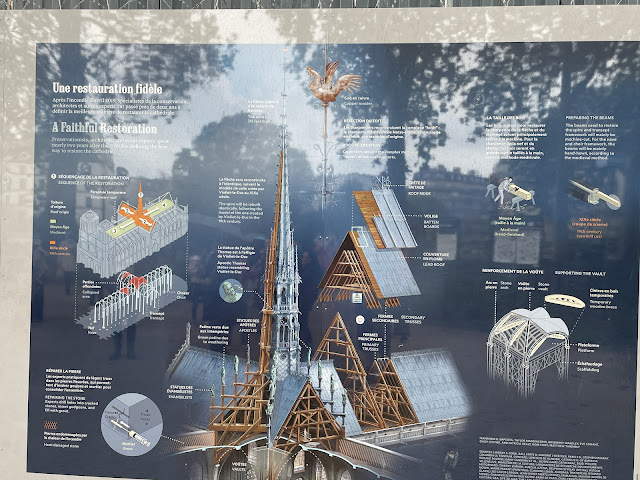






























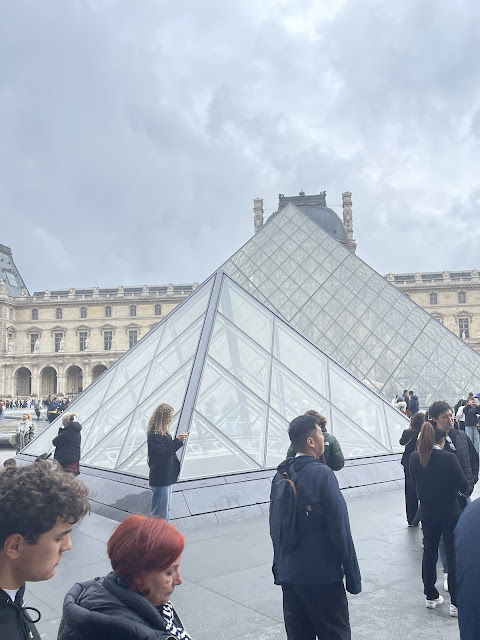









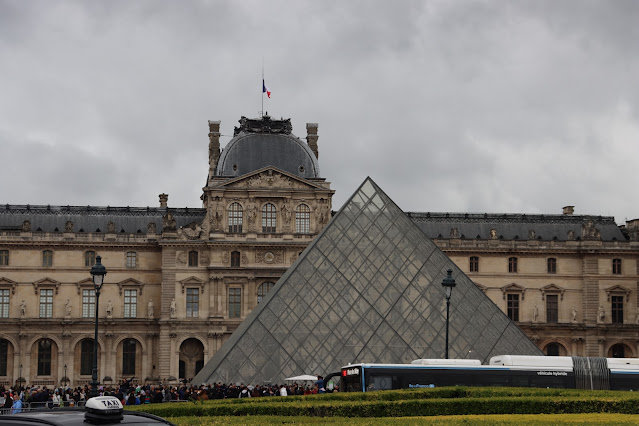









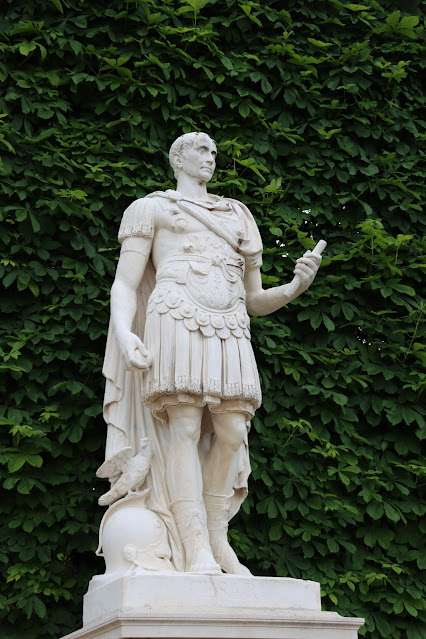

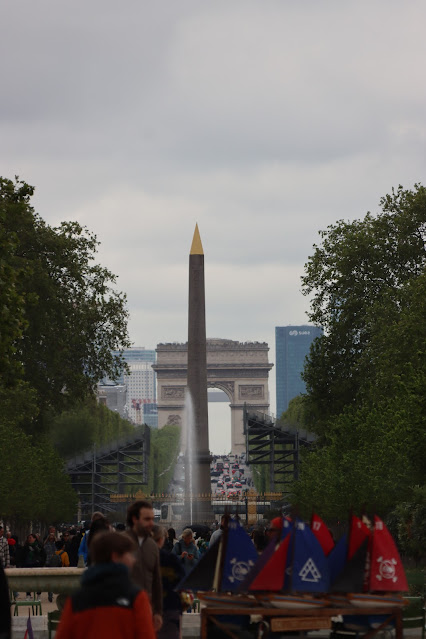










































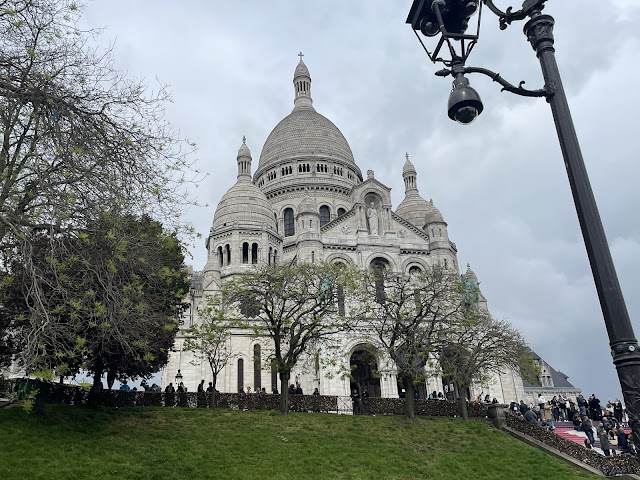































No comments:
Post a Comment